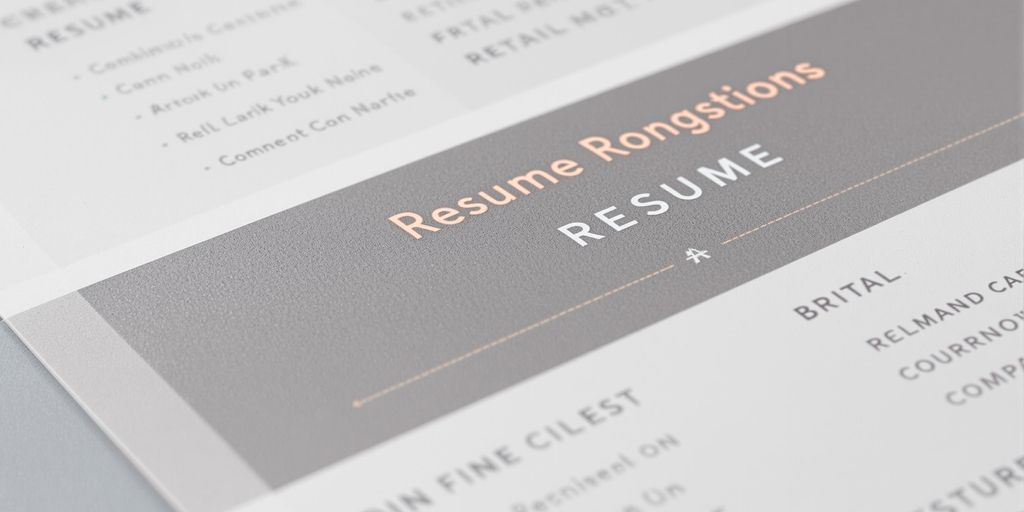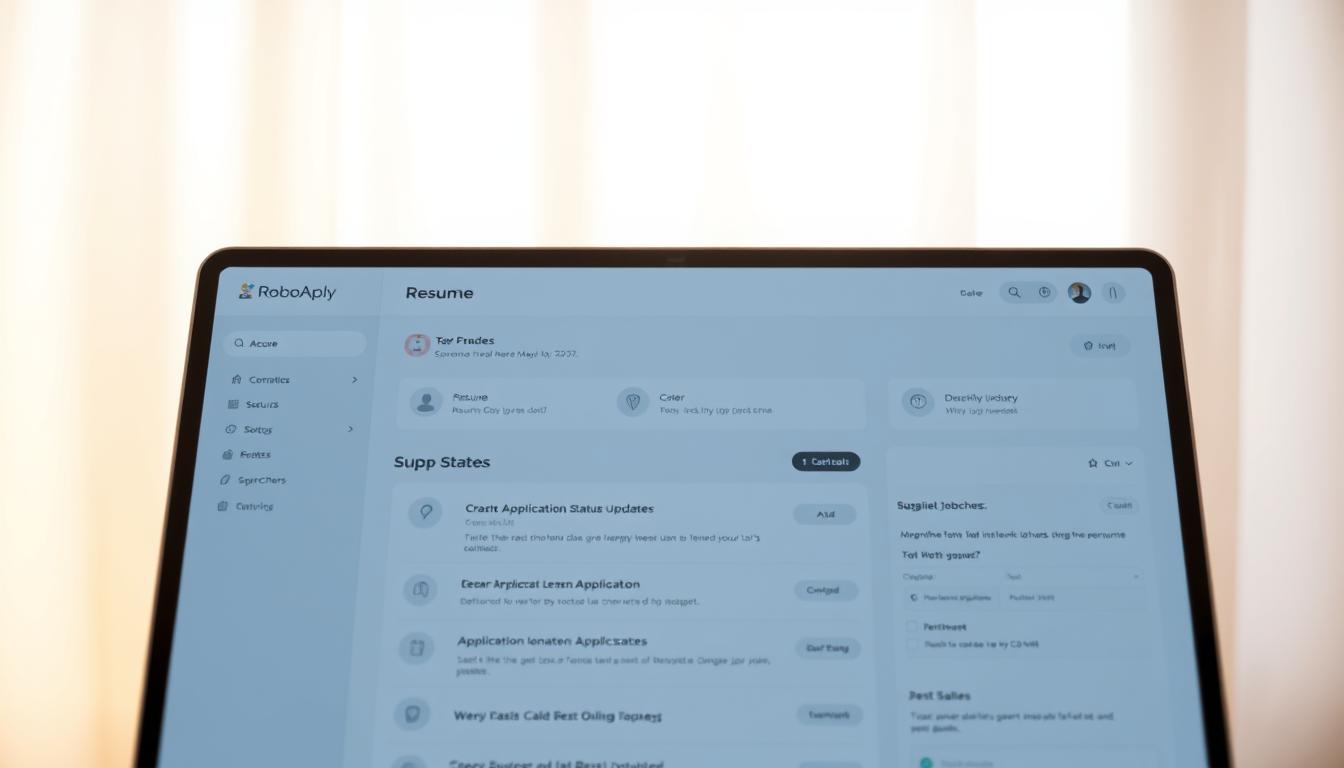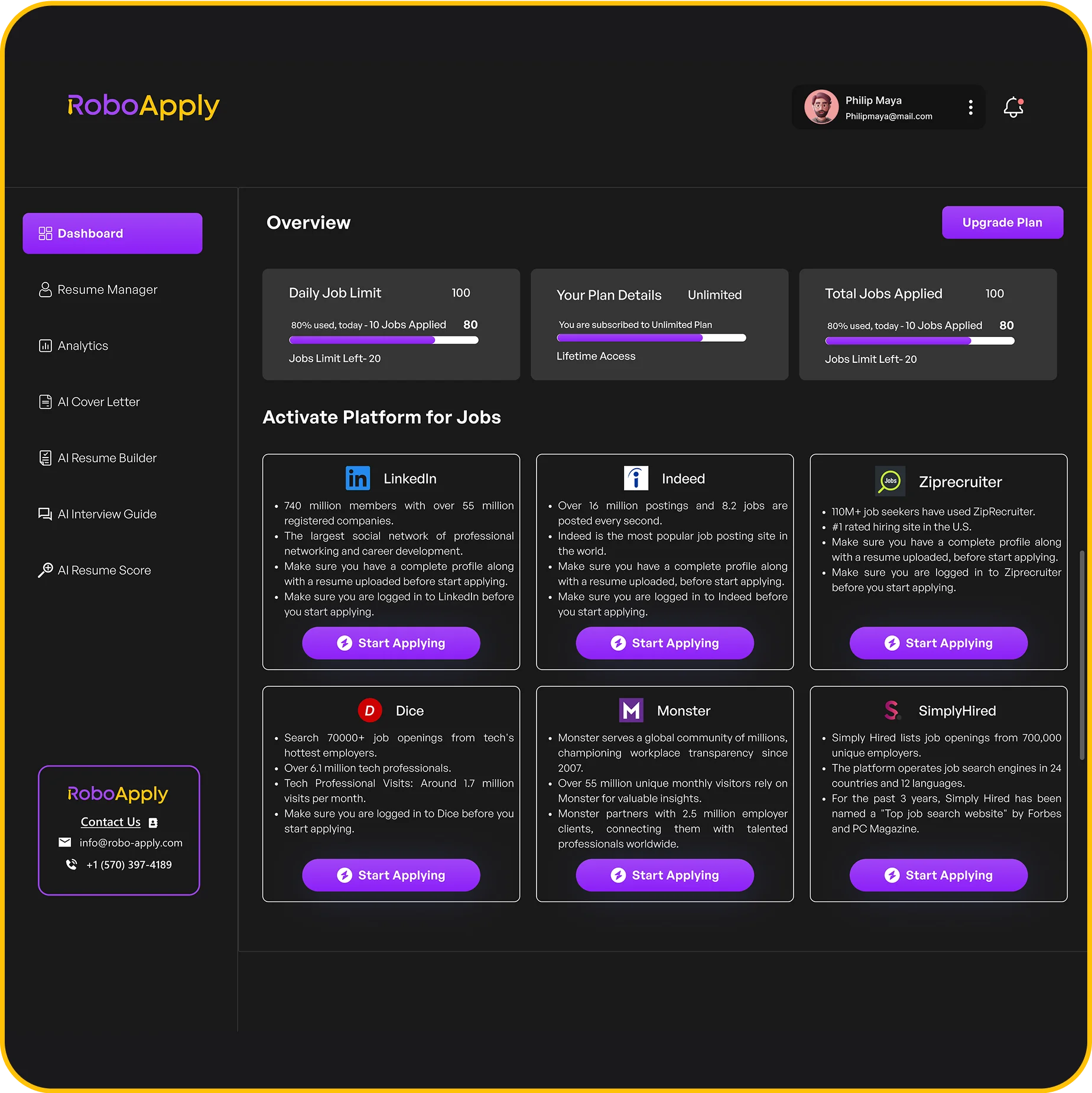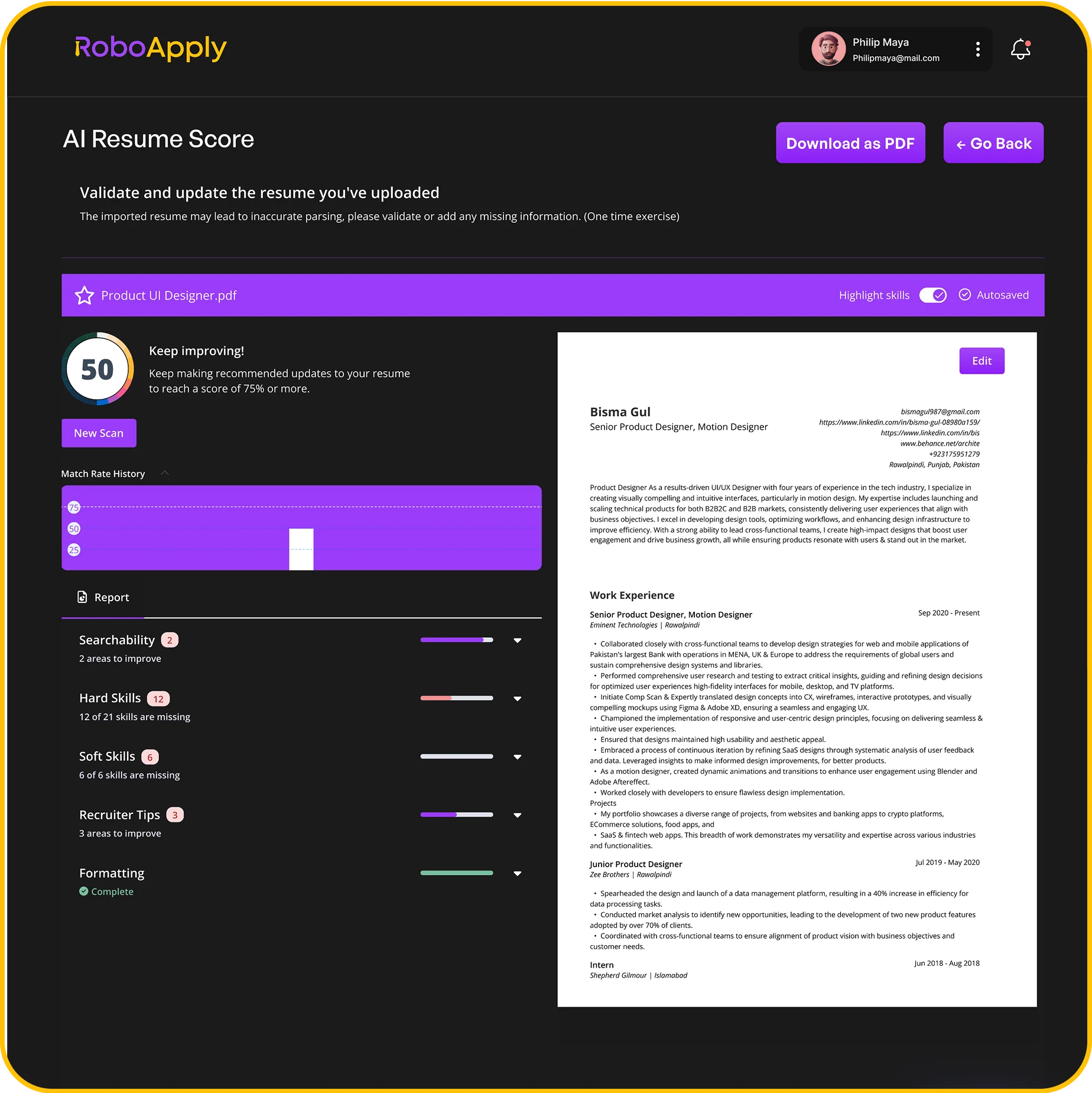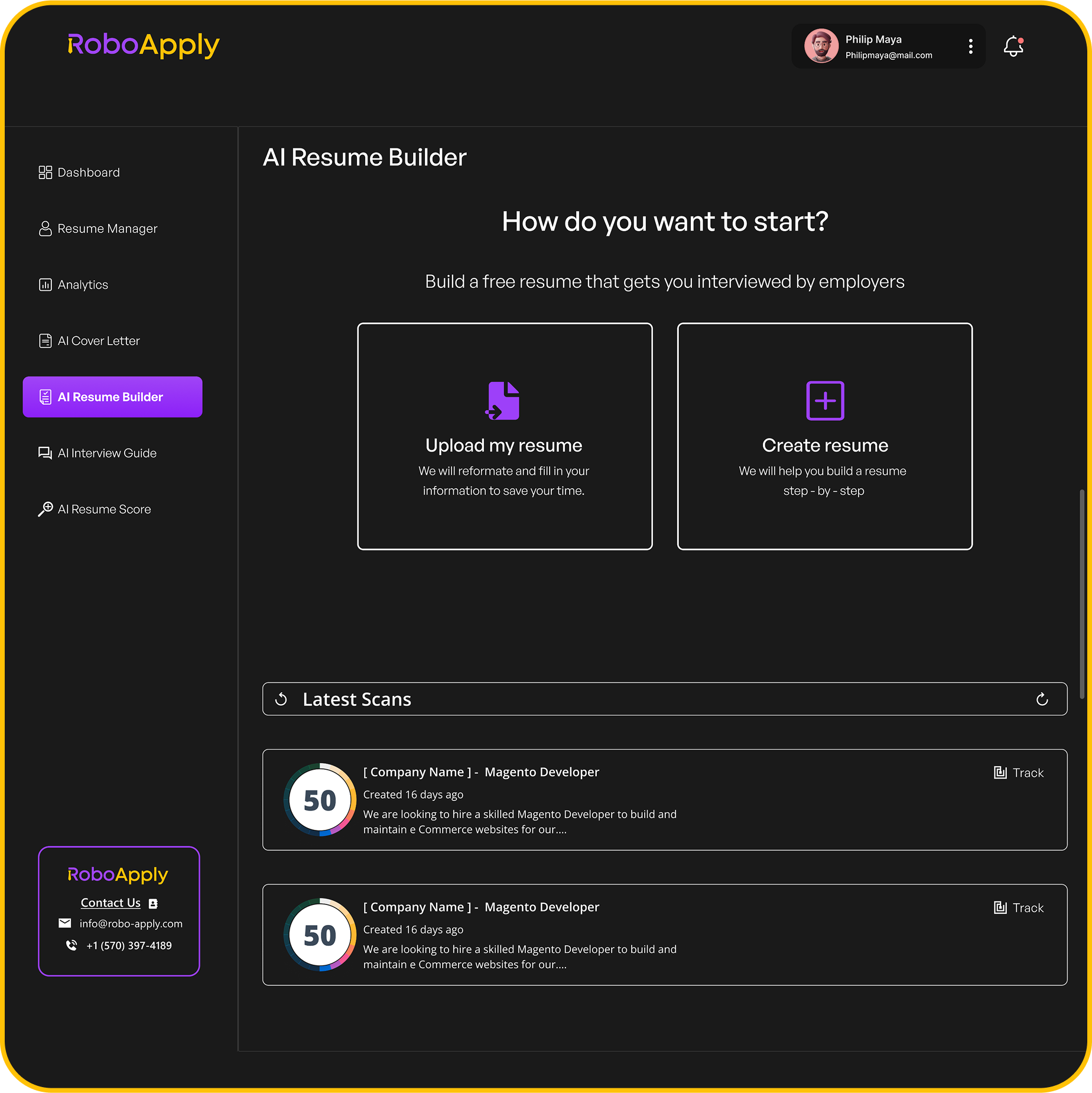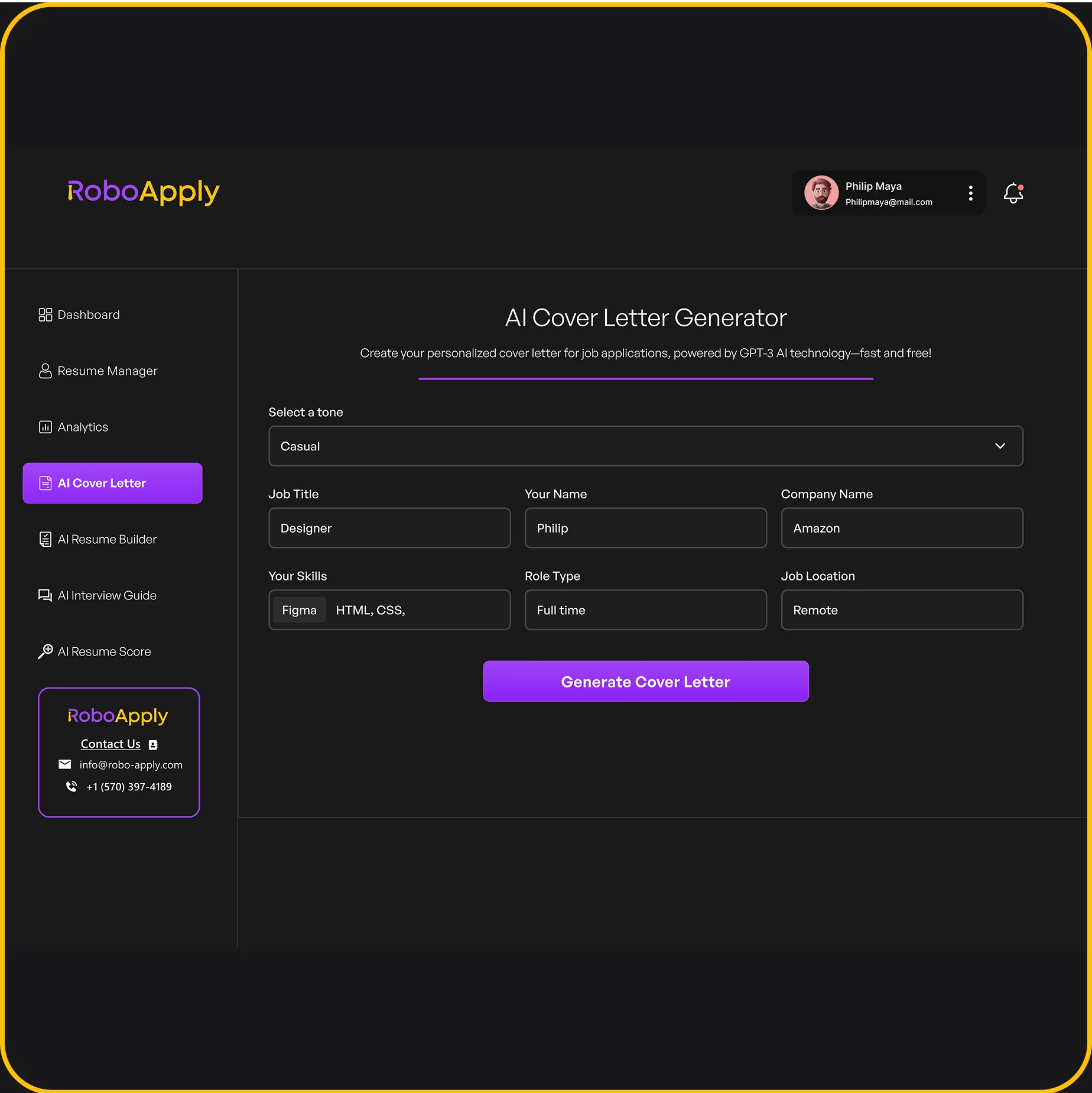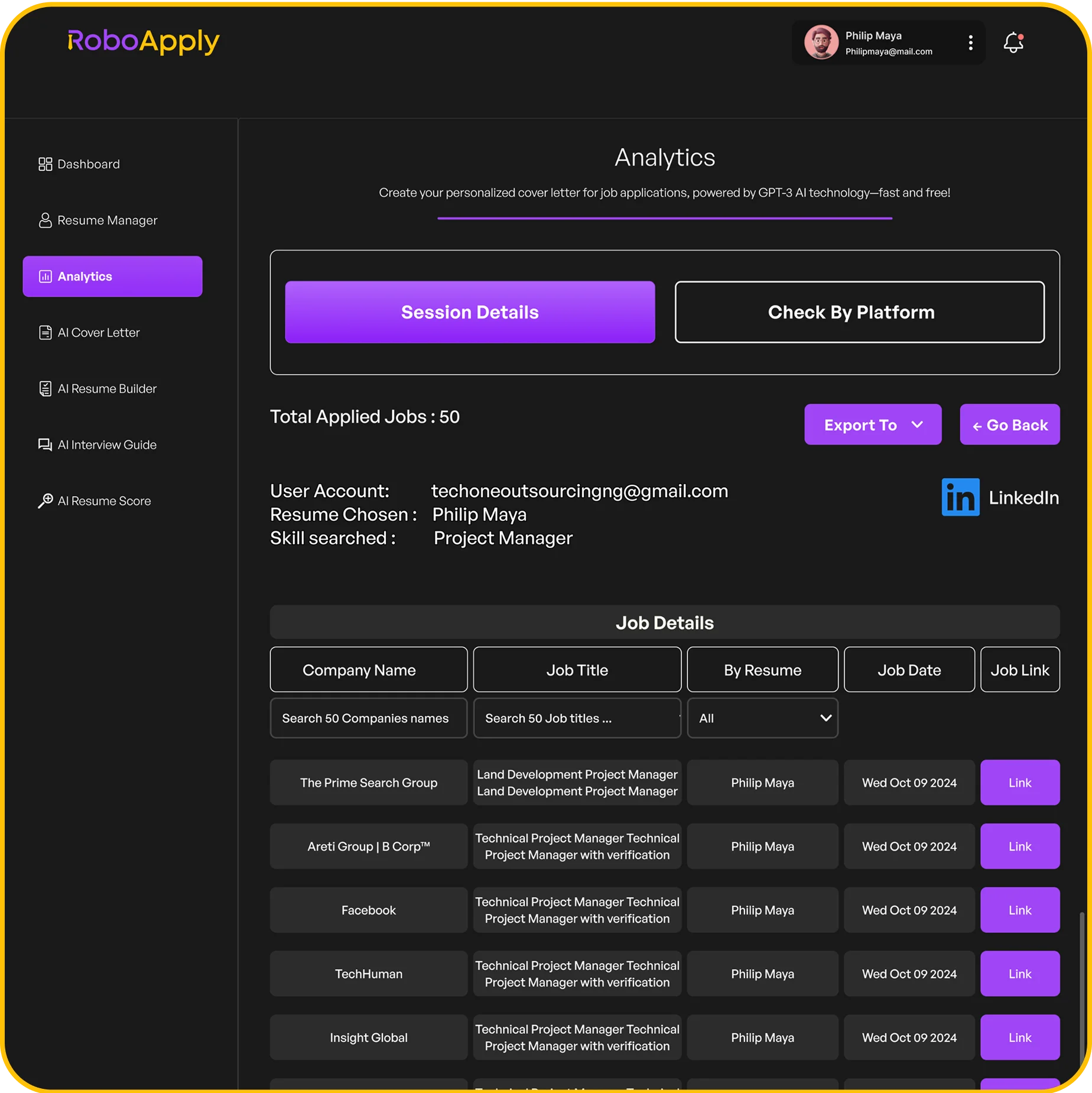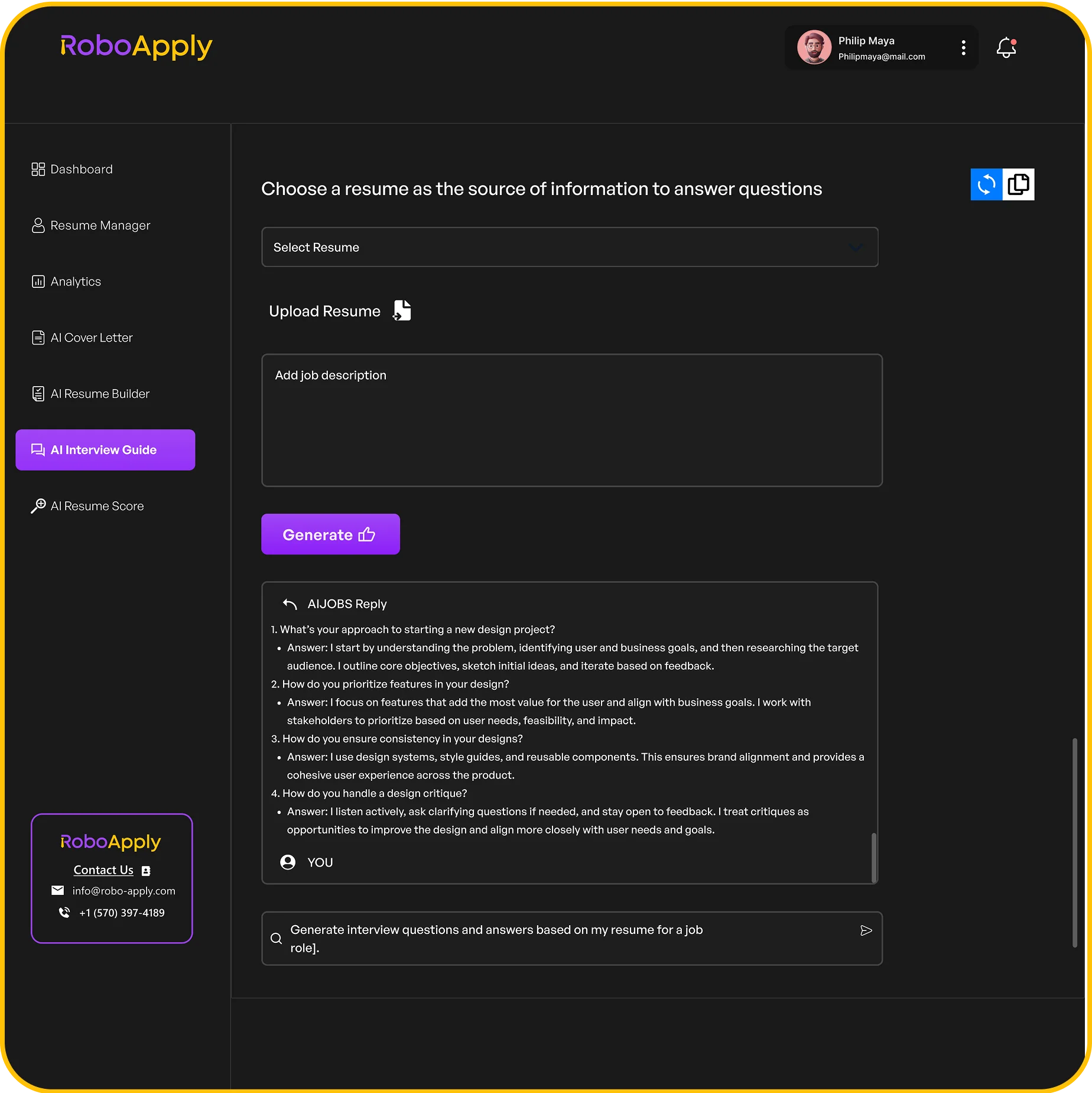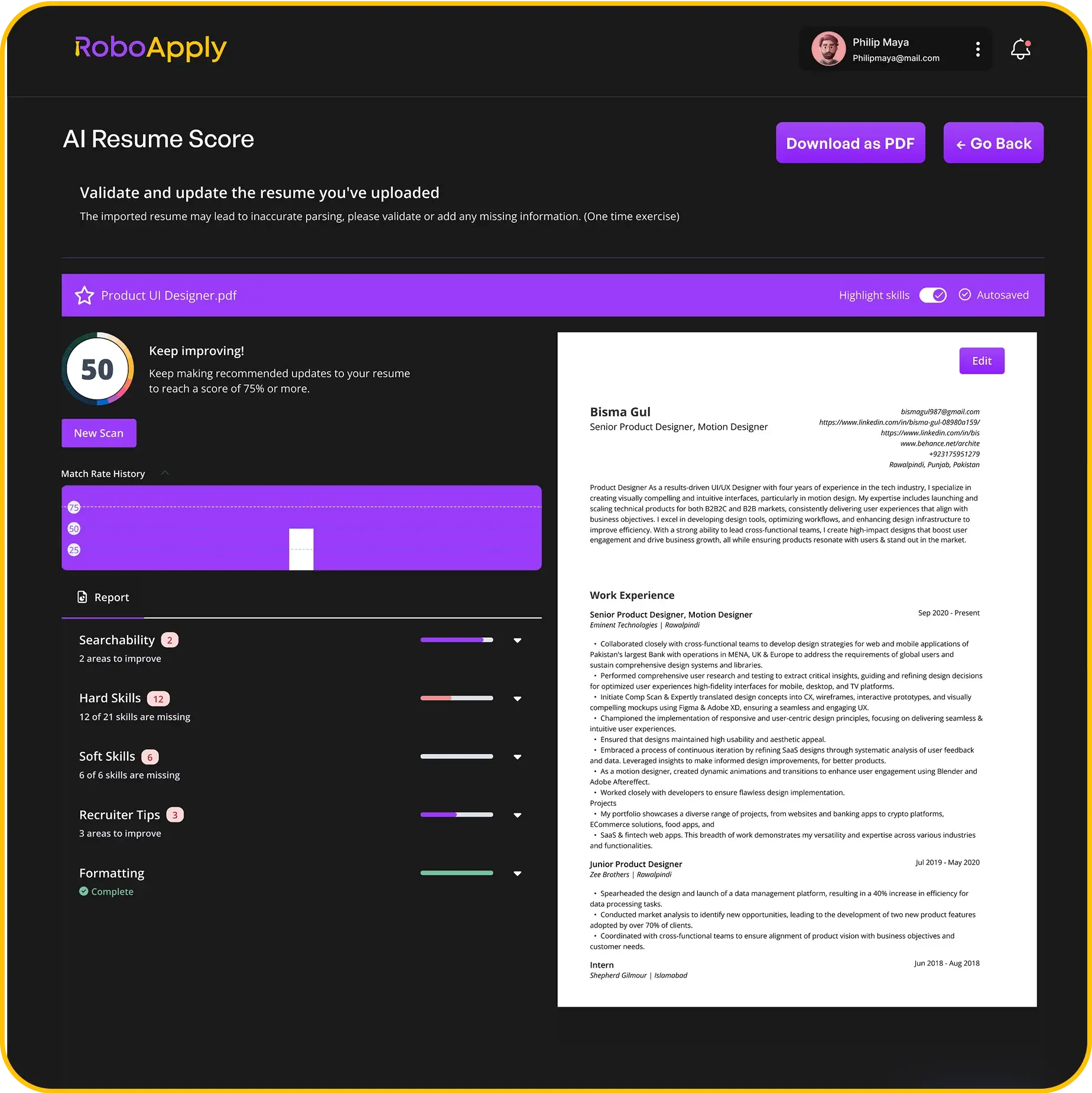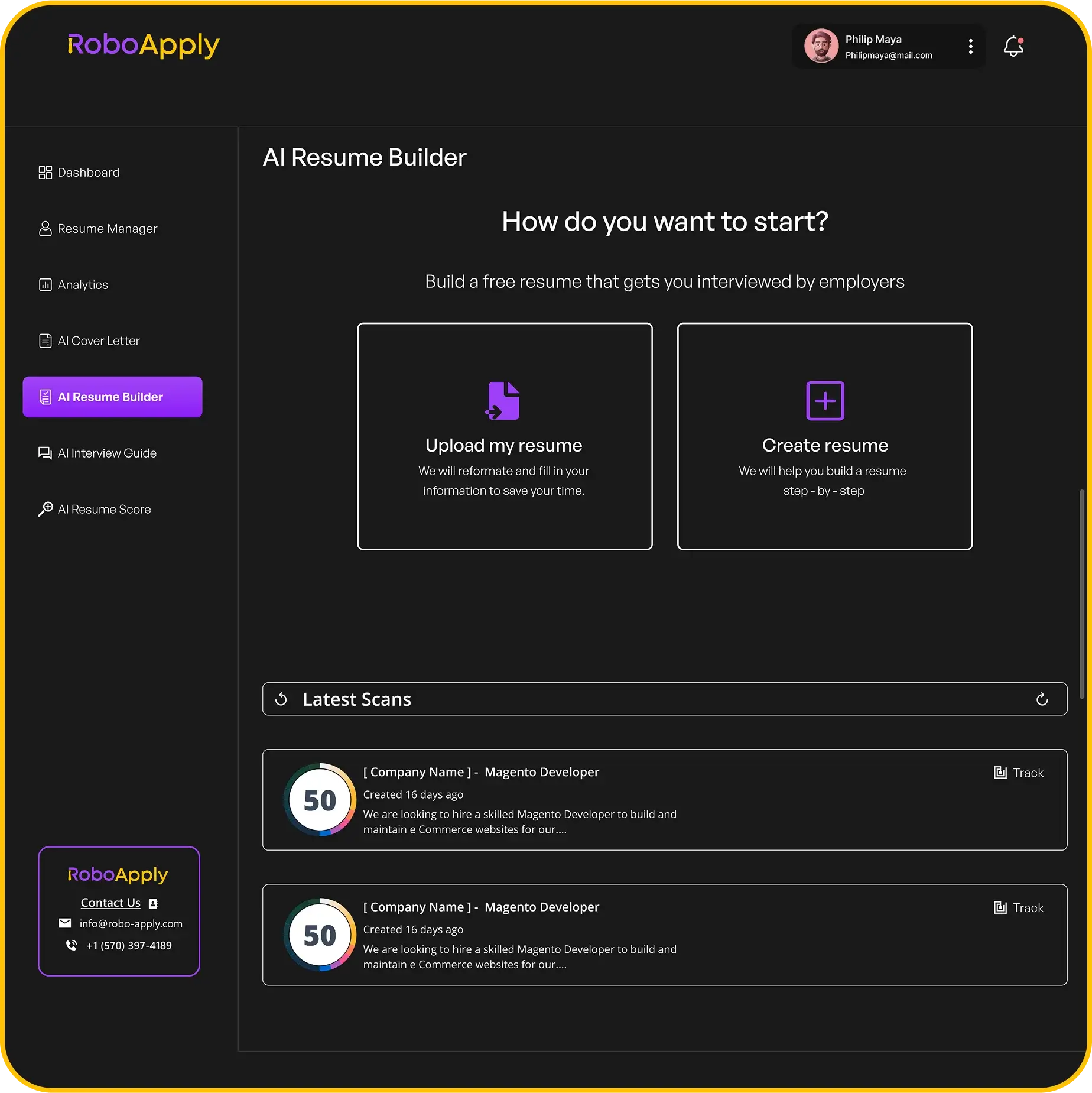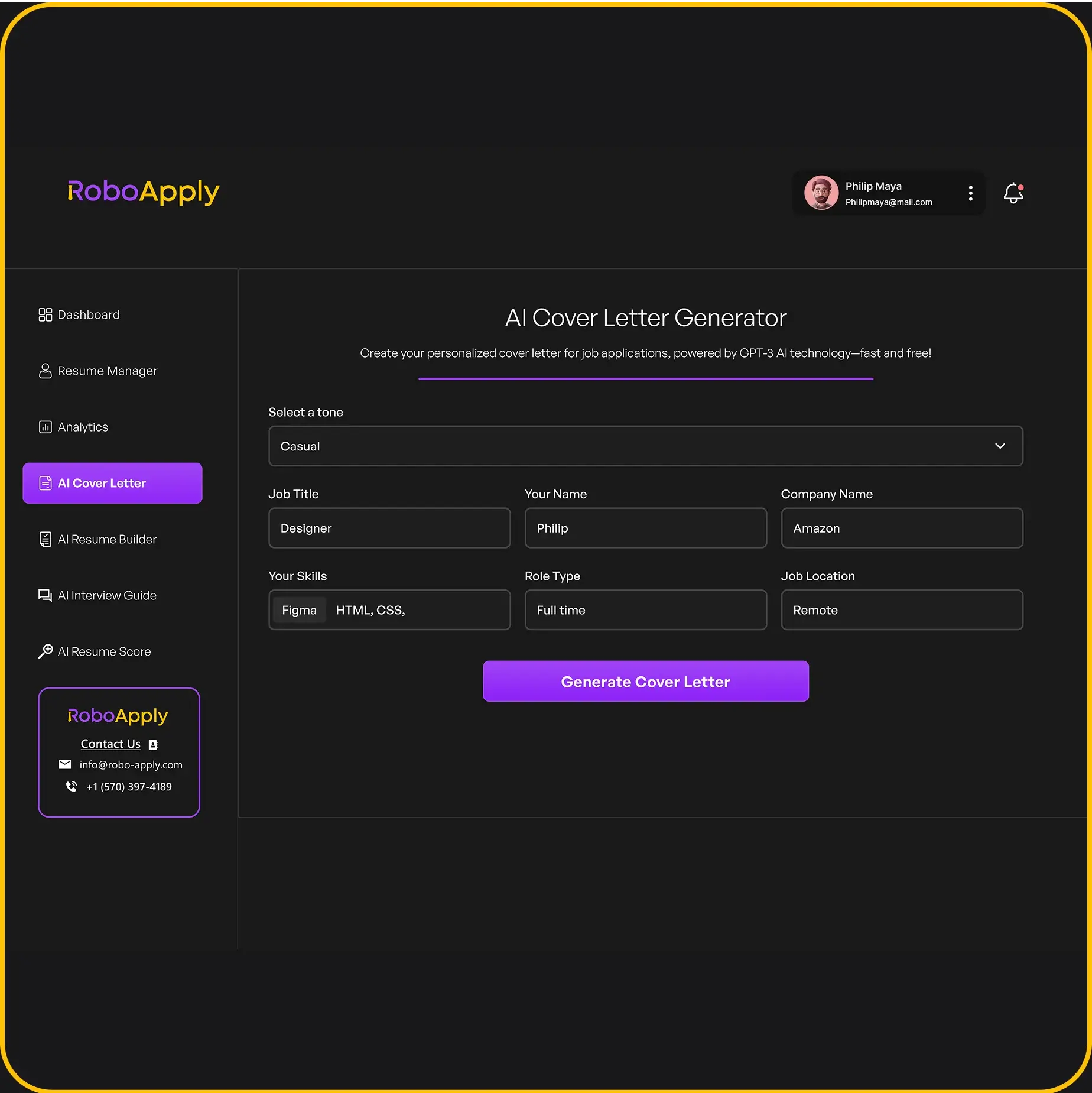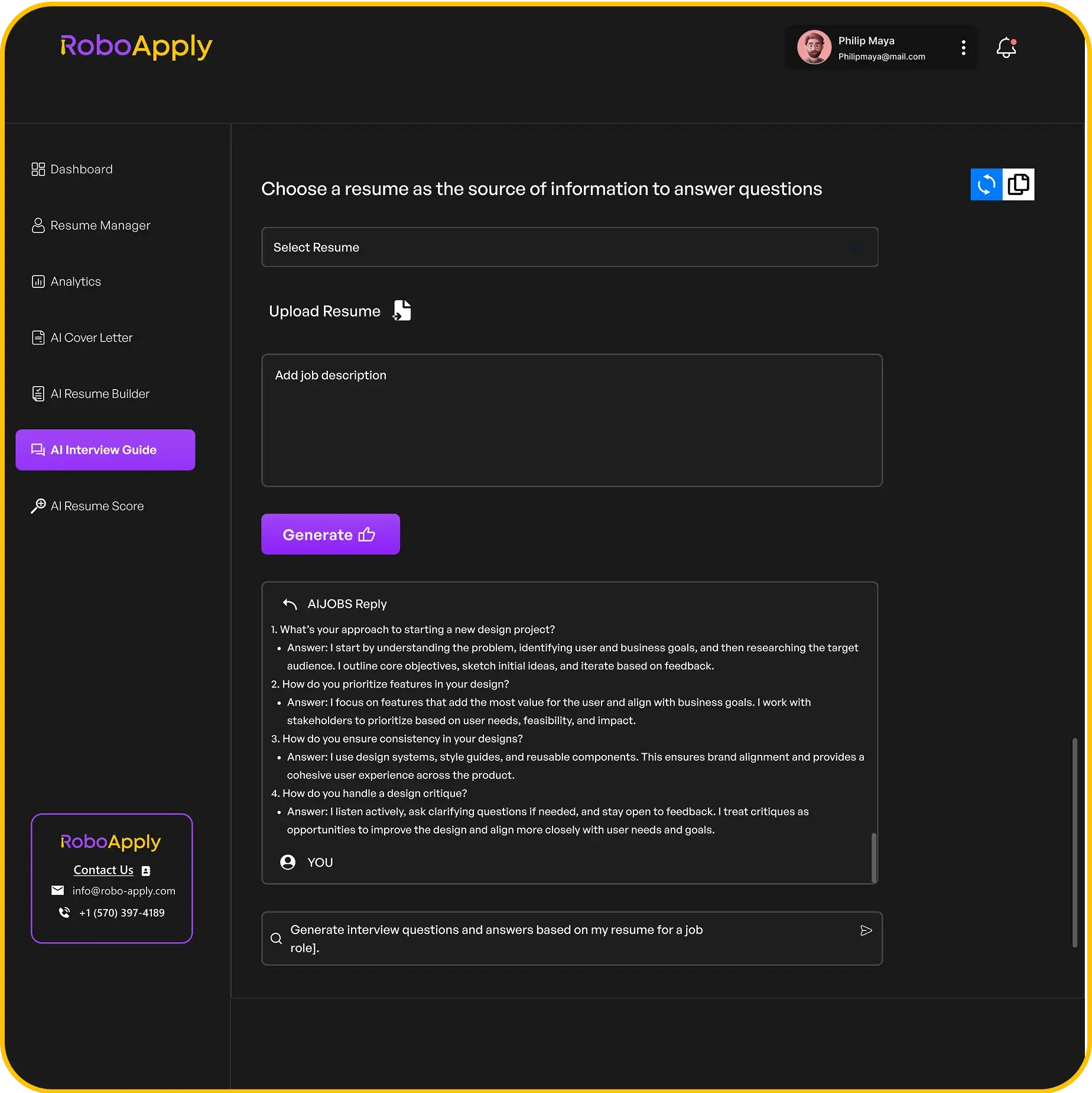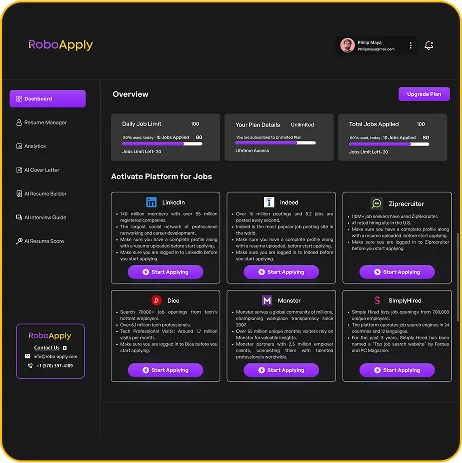So, you want to land a great Merchandising Manager job in 2025? It’s not just about having the right experience anymore. You also need a resume that really pops and gets noticed. This guide is all about helping you build a resume that stands out. We’ll show you some real-world examples and give you tips on how to highlight your skills, especially with new tools like RoboApply. Let’s get your resume ready to impress!
Key Takeaways
- Make sure your Merchandising Manager Resume | Powered by RoboApply clearly shows how you’ve boosted sales or improved product flow using numbers.
- Highlight your tech skills, especially with tools for product management, digital assets, and sales forecasting.
- Tailor your resume for each job application, focusing on the specific skills and achievements that match what the company is looking for.
1. Merchandising Manager

The role of a merchandising manager is all about making sure the right products are in the right place, at the right time, and in the right quantity. It’s a mix of art and science, requiring a keen eye for trends, strong analytical skills, and the ability to work with different teams. A good merchandising manager can significantly impact a company’s bottom line by optimizing product placement and driving sales.
Think of it this way: they’re the ones who decide what goes on the shelves, how it’s displayed, and how much it costs. They analyze sales data, track inventory, and work with vendors to ensure a smooth supply chain. It’s a challenging but rewarding role for anyone who loves retail and has a knack for business.
Here’s a bit more about what they do:
- Product Selection: Choosing which products to carry based on market trends and customer demand.
- Pricing Strategies: Setting prices to maximize profit while remaining competitive.
- Inventory Management: Ensuring there’s enough stock to meet demand without overstocking.
A merchandising manager’s job is to understand the customer, the market, and the product, and then use that knowledge to create a shopping experience that drives sales.
To really stand out, your resume needs to show how you’ve driven sales growth, used market analysis, and worked well with other teams. Show off your skills in data analysis, trend forecasting, and even visual merchandising. Don’t forget to include numbers that prove how you’ve impacted revenue and examples of cool campaigns that got customers excited. If you’re looking to streamline internal processes, consider exploring national merchandising solutions.
For example, a merchandising manager might:
- Develop and implement purchasing and contract management policies.
- Locate and interview vendors to determine product availability and sales terms.
- Oversee product selection, pricing, and inventory to boost sales.
A strong merchandising manager resume highlights achievements in driving sales growth and successful collaboration with cross-functional teams.
It’s also worth noting that the average salary for merchandising managers can vary by state. You can find local salary info for merchandising manager professionals online. Remember, showcasing your experience with product management, including ordering and receiving shipments, is key. A merchandising manager also defines product display guidelines and organizes in-store promotional activities.
2. Retail Store Manager
Being a Retail Store Manager is more than just unlocking the doors in the morning. It’s about creating an environment that drives sales and keeps customers coming back. Your resume needs to show you can handle everything from inventory to employee management.
Think of it as showcasing your ability to run a small business within a larger company. RoboApply can help you tailor your resume to highlight these skills effectively.
A strong retail store manager resume emphasizes leadership, problem-solving, and a proven track record of meeting sales targets. It’s about showing you can not only manage a team but also drive results.
Here’s what you should focus on:
- Leadership Skills: Highlight instances where you trained or mentored employees. Did you implement a new training program? Did you lead weekly team meetings? These details show you have handled important leadership duties.
- Sales Performance: Quantify your achievements whenever possible. Instead of saying you increased sales, say you increased sales by 15% year-over-year. Numbers speak volumes.
- Customer Service: Provide examples of how you improved customer satisfaction. Did you implement a new customer feedback system? Did you resolve customer complaints effectively? Good customer service is key to retaining business.
Consider this example:
Retail Store Manager
ABC Retail, Anytown, USA
2020 – Present
- Increased store sales by 20% in the first year through effective merchandising and staff training.
- Improved customer satisfaction scores by 15% by implementing a new customer service protocol.
- Reduced inventory shrinkage by 10% through improved inventory management practices.
Key skills for retail managers include inventory management, sales forecasting, budgeting, merchandising, customer service, employee training, loss prevention, POS systems, vendor relations, and compliance. Make sure to highlight these skills in your resume.
To get certified, you can become a Certified Retail Store Manager (CRSM). This can be a part-time certification while employed.
Here’s an example of a Retail Sales Strategy Manager resume:
Your Name
Retail Sales Strategy Manager
City, Country • (123) 456-789 • [email protected]
Experience
Retail Store Manager
XYZ Inc. March 2019 – October 2021
- Orchestrated a store-wide initiative to optimize the checkout process, reducing customer wait times by 40% and increasing customer satisfaction ratings by 15% within 6 months.
- Cultivated partnerships with regional colleges to host monthly tech workshops, increasing community involvement and driving a 25% increase in foot traffic during event weekends.
- Promoted to oversee a flagship location based on consistently achieving top sales performance, maintaining a track record of 10% year-over-year revenue growth.
- Launched a successful upselling program that increased average transaction value by 8%.
Remember to tailor your resume to each specific job application. Highlight the skills and experiences that are most relevant to the position. Use action verbs to describe your accomplishments and quantify your results whenever possible. A well-crafted resume can help you land your dream job as a retail store manager. You can also find a great store manager resume example to help you get started.
3. Wholesale Manager
Wholesale managers focus on selling goods in bulk to retailers or other businesses. Your resume should highlight your ability to manage large accounts, negotiate contracts, and drive sales volume. Showcasing your understanding of market trends and supply chain logistics is also key. RoboApply can help you tailor your resume to emphasize these skills.
A strong wholesale manager resume demonstrates a clear track record of exceeding sales targets and building lasting relationships with clients. It should also highlight your ability to analyze sales data and develop effective sales strategies.
Here’s what to keep in mind:
- Quantify your achievements: Use numbers to show how you’ve increased sales, reduced costs, or improved efficiency.
- Highlight your negotiation skills: Provide examples of successful contract negotiations.
- Showcase your knowledge of the industry: Demonstrate your understanding of market trends and customer needs.
For example, instead of saying "Managed key accounts," say "Managed a portfolio of 20 key accounts, increasing sales by 15% year-over-year."
Consider using a template specifically designed for sales roles to make a strong first impression.
4. Senior Sales Executive
Senior Sales Executive roles demand a blend of strategic thinking and hands-on sales experience. These resumes often highlight achievements in revenue generation, team leadership, and market expansion. Let’s look at how to showcase these skills effectively.
Example
Senior Sales Executive resumes need to demonstrate a proven track record of exceeding sales targets and leading successful teams. Here’s how you might structure the experience section:
- Company: ABC Corporation
- Role: Sales Supervisor
- Dates: June 2015 – December 2019
Key Responsibilities and Achievements:
- Supervised a team of 10 sales representatives, consistently achieving 110% of quarterly sales goals.
- Implemented sales tracking metrics that improved team performance by 25%.
- Developed sales training programs, reducing onboarding time by 20% for new hires.
- Led initiatives that increased customer retention by 15% through targeted relationship management strategies.
A strong resume for a Senior Sales Executive should clearly quantify your accomplishments. Use numbers and data to illustrate the impact you’ve had on your previous employers’ bottom line.
Skills to Highlight
When crafting your resume, be sure to include a mix of hard and soft skills relevant to the role. Here are a few examples:
- Sales Management
- Market Analysis
- Team Leadership
- Customer Relationship Management
- Strategic Planning
Certifications and Professional Development
Including relevant certifications and professional development activities can further strengthen your resume. For example:
- Certified Sales Executive (CSE) – Sales and Marketing Executives International (2021)
- Attended National Retail Federation (NRF) Annual Conference (2019, 2020)
Additional Sections
Consider adding sections for awards, volunteering, or other relevant experiences. For instance:
- Employee of the Year – ABC Corporation (2017)
- Regular Volunteer at The Retail Trust, focusing on community development and education (2016-Present)
RoboApply can help you tailor your resume to highlight these key areas, ensuring you present a compelling case to potential employers. You can also create cover letters using a free tool.
5. Clothing Store
Okay, so you want to work in a clothing store? Makes sense! It’s all about showing you understand fashion trends, customer service, and how to make clothes look good. Let’s get into it.
Think about it: a clothing store resume needs to scream "I get retail!" It’s not just about folding sweaters (though that’s part of it!). It’s about showing you can drive sales, understand customers, and keep the store looking amazing. RoboApply can help you tailor your resume to highlight these skills, making sure you stand out from the pile.
Here’s what you need to keep in mind:
- Highlight your sales experience: Even if it’s not directly in clothing, show you can sell.
- Showcase your visual merchandising skills: Can you make a display that stops people in their tracks?
- Emphasize customer service: Happy customers are repeat customers.
Remember to update your resume for each job post. Ask a friend to check for errors. Keep your resume to two pages. Use strong action words. Add a link to your LinkedIn page. Remove outdated skills from your resume. Save your resume with your name in the file name. Keep design simple and clean. Use normal margins (1 inch all around). Focus on the last 10 years of work.
Let’s say you’re applying for a job at a trendy boutique. Here’s how you might describe your experience:
Example:
- "Increased sales by 15% in six months through effective upselling and cross-selling techniques."
- "Created eye-catching window displays that increased foot traffic by 20%."
- "Resolved customer complaints efficiently and professionally, resulting in a 95% customer satisfaction rate."
See how those are specific and show results? That’s what you want. Think about using apparel merchandiser resume samples to get some ideas.
Also, don’t forget to mention any experience you have with inventory management, loss prevention, or even social media marketing for the store. All of that shows you’re a well-rounded candidate. Make sure your clothing store resume is polished and ready to go!
Finally, remember that your online presence matters. Make sure your LinkedIn profile is up-to-date and reflects the skills and experience you’ve highlighted in your resume. Share useful retail content online and join retail and merchandising talks online. Make sure your social media looks job-friendly. This will help you make a great first impression on potential employers.
6. Advertising Sales Representative

Okay, so you’re thinking about using an Advertising Sales Representative resume as inspiration? Makes sense. These roles are all about persuasion and hitting targets, just like merchandising. Let’s see how those skills translate.
Think of it this way: an Advertising Sales Representative is basically selling airtime or ad space. They need to understand what their clients want and then convince them that their platform is the best way to reach their audience. It’s a lot like a merchandising manager figuring out the best way to display products to attract customers.
Here’s what you might see in an Advertising Sales Representative resume that could be useful for your merchandising manager application:
- Proven track record of exceeding sales targets: This shows you’re results-oriented.
- Strong communication and negotiation skills: Essential for any management role.
- Ability to build and maintain client relationships: Important for vendor management and internal collaboration.
The key is to highlight the transferable skills. Did you manage a budget? Did you analyze market trends to identify opportunities? Did you develop strategies to increase sales? These are all things that a merchandising manager does, too.
Here’s a snippet from a sample resume:
Experience:
- ABC Corporation (June 2015 – December 2018)
- Sales Representative
- Supervised a team of 10 sales representatives, achieving 110% of quarterly sales goals consistently.
- Implemented sales tracking metrics that improved team performance by 25%.
- Developed sales training programs, reducing onboarding time by 20% for new hires.
- Led initiatives that increased customer retention by 15% through targeted relationship management strategies.
- Sales Representative
See how they quantify their achievements? That’s what you need to do in your merchandising manager resume. Use RoboApply to help you tailor your resume to the specific job description and highlight the skills and experience that are most relevant. You can also look at sales representative resume samples for more inspiration.
7. Visual Merchandiser
Visual Merchandisers are the artists of the retail world, crafting appealing displays that draw customers in and boost sales. They blend creativity with an understanding of consumer behavior to create visually stunning and effective presentations. It’s about making products look irresistible. RoboApply can help you tailor your resume to highlight the specific skills and experiences that visual merchandising roles demand.
Visual merchandising is more than just arranging items; it’s about telling a story. Here’s what you need to know:
- Understanding the Brand: A visual merchandiser needs to deeply understand the brand’s identity and translate that into the store’s aesthetic.
- Creating Displays: This involves designing and setting up displays that are both visually appealing and strategically placed to maximize sales.
- Analyzing Performance: It’s not just about making things look pretty; it’s about tracking what works and what doesn’t, using data to inform future decisions.
Visual merchandisers need to be part artist, part marketer, and part data analyst. It’s a role that demands a diverse skill set and a keen eye for detail.
Think about how you can showcase your skills in creating compelling displays. For example, instead of saying "Created window displays," try "Designed and implemented window displays that increased foot traffic by 15% during the holiday season." This shows the impact of your work. You can also use your resume to highlight your project engineer skills.
Here’s a simple example of how to present your experience:
| Company | Role | Dates | Achievements
8. E-commerce Merchandiser
E-commerce Merchandisers are all about making online shopping experiences great. They work to make sure products are easy to find, look good, and convince people to buy. It’s a mix of art and science, using data to figure out what works best. Let’s get into what this role looks like on a resume.
An E-commerce Merchandiser resume needs to show you know how to drive online sales. It’s not just about listing products; it’s about showing you understand how people shop online and how to make them want to click that ‘add to cart’ button. You’ll want to highlight your experience with website optimization, product placement, and using data to make decisions. RoboApply can help you tailor your resume to showcase these skills effectively.
For example, you might include points like:
- Managed product listings and descriptions to improve search engine rankings.
- Analyzed website traffic and sales data to identify trends and opportunities.
- Collaborated with marketing teams to create promotional campaigns.
- Implemented A/B testing to optimize product pages and improve conversion rates.
- Monitored competitor websites to stay informed about industry trends.
A strong E-commerce Merchandiser resume shows you can turn website visits into sales. It’s about proving you understand the online customer and know how to make them happy.
Think about including specific numbers to show your impact. Did you increase sales by a certain percentage? Did you improve conversion rates? Numbers speak volumes. Also, make sure to highlight any experience you have with specific e-commerce platforms or tools. Knowing your way around Shopify, Magento, or Google Analytics can be a big plus. Remember to tailor your resume to each job you apply for, focusing on the skills and experience that are most relevant to the specific role. A well-crafted resume can really help you stand out in the competitive world of e-commerce. Consider highlighting your merchandiser resume to showcase your skills and experience effectively.
9. Merchandising Associate

Merchandising Associates are the backbone of retail execution. They ensure products are attractively displayed, properly stocked, and priced correctly. A strong resume in this role highlights your attention to detail, customer service skills, and ability to work in a fast-paced environment. Let’s explore what makes a Merchandising Associate resume stand out.
Attention to detail is key in this role, as is the ability to follow instructions and work independently. RoboApply can help you tailor your resume to showcase these skills effectively.
Here’s what you should focus on:
- Customer Service: Interacting with customers, answering questions, and providing assistance.
- Visual Merchandising: Arranging products in an appealing and strategic manner.
- Inventory Management: Stocking shelves, tracking inventory levels, and reporting discrepancies.
- Pricing and Promotions: Ensuring accurate pricing and implementing promotional displays.
A well-crafted resume will demonstrate your ability to contribute to a positive shopping experience and drive sales. Quantify your achievements whenever possible, such as the number of shelves stocked per shift or improvements in product presentation.
Consider this example:
Merchandising Associate Experience
Company: Retail Giant Co.
Dates: June 2023 – Present
Responsibilities:
- Maintained product displays according to company standards, resulting in a 15% increase in sales for featured items.
- Assisted customers with product selection and provided excellent customer service, consistently receiving positive feedback.
- Managed inventory levels and restocked shelves, minimizing stockouts and maximizing product availability.
- Implemented promotional displays and ensured accurate pricing, contributing to successful marketing campaigns.
To make your resume even stronger, consider including specific examples of how you’ve improved product presentation or resolved inventory issues. Showcasing your problem-solving skills and initiative will set you apart from other candidates. Remember to tailor your resume to each job application, highlighting the skills and experiences that are most relevant to the specific role. You can also check out some merchandiser resume samples for inspiration.
10. Product Lifecycle Tools

Product lifecycle management (PLM) tools are basically the software that helps manage a product from the very first idea all the way to when it’s no longer sold. Think of it as a digital command center for everything about a product. It’s not just about design; it’s about managing data, processes, and people involved in bringing a product to market.
These tools are super important for merchandising managers because they provide a central place to see how a product is doing at each stage. This helps in making better decisions about inventory, marketing, and even product improvements. RoboApply can help you highlight your experience with these tools, showing employers you know how to use them to boost efficiency and sales.
PLM software can be a game-changer for companies that handle a lot of products or have complex supply chains. It makes sure everyone is on the same page and that information is accurate and up-to-date.
Here’s why PLM tools are so useful:
- Centralized Data: Keeps all product information in one place.
- Improved Collaboration: Helps different teams work together more smoothly.
- Faster Time to Market: Speeds up the process of getting products out there.
Using PLM tools effectively means you can track product performance, identify potential issues early on, and make data-driven decisions. This leads to better products and happier customers.
Let’s look at some examples of how PLM tools can be used in merchandising:
- Tracking Product Performance: Use analytics tools to see which products are selling well and which aren’t.
- Managing Product Changes: Keep track of any changes made to a product’s design or features.
- Improving Team Productivity: Implement sales tools to boost how well your team works together.
Here’s a simple table showing the benefits of using PLM tools:
| Benefit | Description |
|---|---|
| Reduced Costs | Streamlines processes and reduces errors. |
| Faster Time to Market | Speeds up product development and launch. |
| Improved Quality | Ensures products meet quality standards throughout their lifecycle. |
| Better Collaboration | Enhances communication and coordination between teams. |
By showing you’re skilled with PLM tools, you’re telling employers you can help them manage their products more effectively and drive better results. Make sure to include specific examples of how you’ve used these tools in your resume. For example, you could mention a program that enhanced the product knowledge of the team. Or how you contributed to an expanded product portfolio.
11. Digital Asset Tools
Okay, so you’ve got all these product photos, videos, and marketing materials. Where do they live? How do you keep track of them? That’s where digital asset tools come in. They’re basically your organized digital filing cabinet, but way more powerful. Think of it as a centralized hub for all your visual content. It’s not just about storage; it’s about making sure the right people have access to the right assets at the right time. RoboApply can help you showcase your experience with these tools, highlighting how you’ve used them to improve efficiency and organization.
Using digital asset tools effectively can seriously streamline your workflow. It’s about more than just storing files; it’s about making them easily accessible and usable for everyone on your team.
Here’s why they’re important:
- Organization is key: No more digging through endless folders to find that one product shot. Everything is tagged, categorized, and searchable.
- Version control: Avoid the chaos of multiple versions floating around. Know exactly which asset is the latest and greatest.
- Collaboration made easy: Share assets with your team, external partners, or even e-commerce platforms without the hassle of email attachments or file-sharing services.
Let’s be real, without these tools, you’re basically operating in the dark ages. They’re essential for any modern merchandising operation.
Consider these points when talking about digital asset tools on your resume:
- Mention specific tools you’ve used (more on that below).
- Quantify your impact. Did you reduce time spent searching for assets? Did you improve team collaboration?
- Show that you understand the importance of brand consistency and how these tools help maintain it.
Here are some examples of digital asset tools you might encounter:
- Digital Asset Management (DAM) systems: These are the big players, designed for large organizations with tons of assets. They offer advanced features like workflow automation, rights management, and integration with other systems. You can compare free DAM software to get a sense of what’s out there.
- Cloud storage services: While not specifically designed for digital asset management, services like Google Drive, Dropbox, and Box can be used for basic storage and sharing. They’re a good option for smaller teams with simpler needs.
- Project management tools: Some project management tools, like Asana or Trello, offer features for managing and sharing files. This can be a good option if you’re already using these tools for other aspects of your work.
By including your experience with digital asset tools, you’re showing employers that you’re organized, efficient, and understand the importance of managing digital content effectively. And that’s a big plus in today’s digital world. If you’re in the fashion industry, you might want to check out Qart’s Digital Asset Management platform, which is tailored for managing product images.
12. Sales Prediction Software
Sales prediction software is designed to help businesses forecast future sales trends by analyzing historical data, market conditions, and other relevant factors. These tools can range from simple Excel-based models to sophisticated AI-powered platforms. Using such software can significantly improve inventory management and strategic planning.
These tools help businesses make informed decisions about inventory, staffing, and marketing campaigns.
Here’s a breakdown of what you might find:
- Statistical Analysis: Uses historical sales data to identify trends and patterns.
- Machine Learning: Employs algorithms to predict future sales based on various factors.
- Reporting and Visualization: Presents data in an easy-to-understand format.
Sales prediction software can be a game-changer for merchandising managers. It allows for more accurate forecasting, which leads to better inventory control and reduced waste. This ultimately contributes to increased profitability and improved customer satisfaction.
Consider these points when evaluating sales prediction software:
- Accuracy: How reliable are the predictions?
- Integration: Does it integrate with existing systems?
- Ease of Use: How user-friendly is the software?
For example, a merchandising manager might use AI-driven demand forecasting to optimize inventory levels, reducing both overstock and stockouts. Or, they might use sales forecasting software to get reliable revenue predictions, helping them adjust their strategies accordingly. Some might even use merchandise planning software to improve forecast accuracy and boost profitability. Even something as simple as Excel for forecasting can be a starting point for basic sales predictions. RoboApply can help you highlight your experience with these tools on your resume, showcasing your ability to leverage data for better merchandising decisions.
13. Smart Product Suggestion Systems
Smart product suggestion systems are all about using data and algorithms to show customers items they’re likely to buy. Think of it as a virtual salesperson who knows your preferences. These systems analyze browsing history, past purchases, and even what other people with similar tastes have bought. The goal? To make shopping easier and increase sales. It’s like when you’re watching a video online, and the platform suggests what to watch next – same idea, but for shopping.
These systems are becoming increasingly sophisticated, using AI is revolutionizing e-commerce to personalize the shopping experience. They’re not just throwing random products at you; they’re trying to understand what you really want. This can lead to a better shopping experience and more sales for the retailer. RoboApply can help you highlight your experience with these systems on your resume, showing employers you understand how to use technology to drive sales.
Implementing these systems isn’t just about adding a feature; it’s about creating a more engaging and personalized shopping experience. It’s about understanding your customers and using data to help them find what they need (and maybe a few things they didn’t know they wanted).
Here’s how these systems typically work:
- Data Collection: Gathering information about customer behavior.
- Analysis: Using algorithms to identify patterns and preferences.
- Recommendation: Suggesting products based on the analysis.
- Optimization: Continuously improving recommendations based on feedback and results.
These systems can be implemented in various ways, such as:
- "Frequently bought together" suggestions.
- "Customers who bought this item also bought" recommendations.
- Personalized product recommendations based on browsing history.
The effectiveness of these systems depends on the quality of the data and the sophistication of the algorithms used. A well-designed system can significantly boost average order value and improve customer satisfaction. It’s all about making the shopping experience more relevant and enjoyable. Think of it as having a personal shopper available 24/7, guiding you to the perfect products. And with RoboApply, you can showcase your skills in implementing and managing these systems, making you a more attractive candidate to potential employers.
Want to know how smart systems can help you find exactly what you need, just like magic? These systems learn what you like and suggest things you’ll love. To see how this works and get started with our own smart tools, check out our website today!
Wrapping Things Up
So, there you have it. Making a good merchandising manager resume might seem like a lot of work, but it’s really about showing what you can do. Focus on your achievements, use numbers to back them up, and make sure your resume looks clean and easy to read. Think about what the company wants and tailor your resume to fit that. If you do these things, you’ll have a much better chance of getting noticed and landing that job.
Frequently Asked Questions
What should I put on my resume to be a merchandising manager?
When you’re writing your resume for a merchandising manager job, make sure to show how you’ve helped stores sell more stuff. Talk about how you pick products, set prices, and manage what’s in stock. It’s really good to include numbers, like if you boosted sales by a certain percent, or if you made a new display that got more people to buy things. Also, mention if you’re good at looking at sales data or guessing what customers will want next. Don’t forget to say if you’re good at working with other teams, like marketing or sales.
What does a merchandising manager actually do?
A merchandising manager helps a store or company decide what products to sell, how to price them, and how to display them so people want to buy them. They try to make sure the right products are in the right place at the right time. This job often means looking at sales numbers, understanding what customers like, and working with suppliers and other parts of the company to make sure everything runs smoothly and sales go up.
What kind of schooling or experience do I need to become a merchandising manager?
To get a job as a merchandising manager, you usually need to have some experience working in retail or sales. Many companies look for people who have a college degree, especially in business, marketing, or fashion. But even if you don’t have a degree, if you have a lot of experience showing you can manage products, boost sales, and understand what customers want, you might still be a good fit. What’s most important is showing you can get results and help the business make money.
